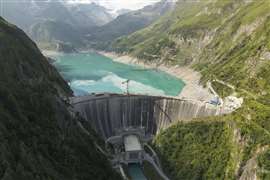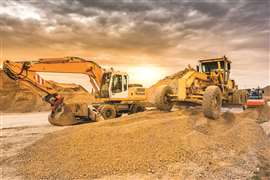Read this article in Français Deutsch Italiano Português Español
UN calls for ‘urgent’ changes to heat health policies for workers as temperatures rise
22 August 2025
 Image courtesy of Samsung C&T
Image courtesy of Samsung C&T
Two UN bodies have sounded an urgent call to update occupational health policies as extreme weather events expose workers, including construction workers, to heat stress.
Two UN bodies have sounded an urgent call to update occupational health policies as extreme weather events expose workers, including construction workers, to heat stress.
A new report from the World Health Organization (WHO) and World Metereological Organization (WMO) found that workers are increasingly being exposed to extreme heat.
Half the world’s population already suffers the adverse effects of high temperatures, which expose workers to a range of health risks including heat stroke, dehydration, kidney dysfunction, and neurological disorders.
Meanwhile, worker productivity falls by 2-3% for every degree that the temperature rises about 20C, it found.
The new report and technical guidance, entitled Climate change and workplace heat stress, comes after 2024 proved to be the hottest year on record.
The report’s authors said immediate action is needed to address the impact of heat stress on workers, as daytime temperatures of more than 40C and even above 50C become more common.
“Occupational heat stress has become a global societal challenge, which is no longer confined to countries located close to equator – as highlighted by the recent heatwave in Europe,” said WMO deputy secretary-general Ko Barrett. “Protection of workers from extreme heat is not just a health imperative but an economic necessity.”
Among the key recommendations to governments and employers within the guidance are:
- Develop occupational heat-health policies with tailored plans and advisories that consider local weather patterns, specific jobs, and worker vulnerabilities;
- Focus on vulnerable populations with special attention given to middle-aged and older workers, individuals with chronic health conditions, and those with lower physical fitness who can be more susceptible to the effects of heat stress;
- Education and awareness raising for first responders, health professionals, employers, and workers to recognise and properly treat heat stress symptoms, which are often misdiagnosed;
- Engage all stakeholders from workers and trade unions to health experts and local authorities in the co-creation of heat-health strategies that are locally relevant and widely supported.
- Design solutions that are not only effective but also practical, affordable and environmentally sustainable, ensuring policies can be implemented at scale.
- Embrace innovation by adopting technologies that can help safeguard health while maintaining productivity.
- Support further research and evaluation to strengthen the effectiveness of occupational heat-health measures and ensure maximum protection for workers worldwide.
STAY CONNECTED


Receive the information you need when you need it through our world-leading magazines, newsletters and daily briefings.
CONNECT WITH THE TEAM











